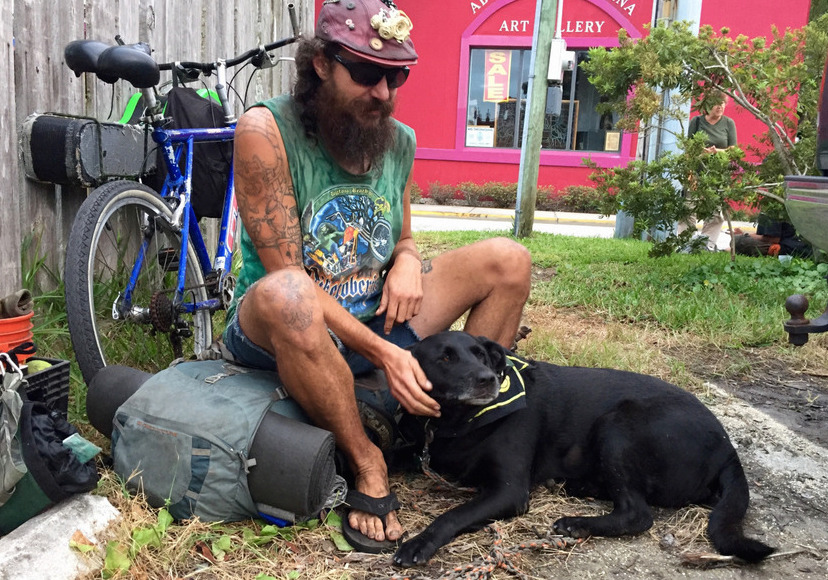By Joshua Santos | gargoyle@flagler.edu
It was dark. I didn’t know it could be so hard to walk along train tracks. We followed them under a bridge. I felt intrusive, like walking into someone’s home without knocking. On Labor Day weekend I was in Hollywood, FL, producing an issue of the Homeless Voice with 19 other students as part of a journalism project. We were at the COSAC Foundation homeless shelter, which accepts anyone who needs the help. The shelter also publishes its own newspaper — the second largest homeless newspaper in the country — and we had 36 hours to produce it.
Nightfall came and deadlines started creeping up. Several of us were taken around town for something the shelter staff calls “outreach.” There was a caravan of us, and I rode in the back of a shelter-owned ambulance, stocked with cartons of cigarettes and bottles of water.
Someone asked if what was happening was legal, but there were police officers with us, and they knew Sean.
Sean Cononie runs the COSAC Foundation, and he was also driving the ambulance. His goal was to talk to people in the streets, and hopefully get them to come back to the shelter just a few miles away from wherever we were.
After the bumpy ride, we gathered in a parking lot and made our way across a field next to a train station, then walked along the tracks towards an overpass. The streetlights above cast a hard shadow.
The cops went in first, flashing their lights and saying hello to the man sitting in a chair, just minding his own business. After some clarification about why we were there, the cops told us to have at it and we began asking questions.
The man’s name was Bernie and he lives under the $15 million bridge. At least that is the value he attached. No doors, no walls, no air conditioning, no fridge. From what I could see illuminated by the cop’s flashlight, it was only Bernie sitting in his chair, and a friend lying out on a small dirty mattress by his side.
The shelter staff offered him some smokes and water, which he accepted.
I was kneeling on the ground, holding a camera — pretty much recording pure darkness. Bernie recognized Cononie by his voice. He had helped Bernie to the ER when he was urinating blood. “As it turned out, I have bladder cancer,” Bernie said.
Still, he refused to go to the shelter. When told his cancer was treatable, his response was: “I will live until I die.” Whether it is under that bridge, or the Christian Retreat in Bradenton he was telling us about, who knew when or where?
Bernie just wanted to be left alone. Away from rules, away from a society that he was tired of, away from homes, people, jobs, businesses.
He was unsure of what we wanted to know. He told us exactly how to survive out here: you tough it. That’s how he does it, living on the street. Getting food and finding shelter is no problem. He isn’t desperate, dying out on the streets. To be a “street cat,” Bernie said, “you got to be streetwise. You got to know what to look for and what to look out for.”
Everyone in the area knows each other. It’s a community down there on the streets. People are neighbors. They share food. They warn each other of trouble happening nearby.
“You do what you have to do to just survive,” he said. “I see what society is doing. They aren’t doing very well.”
He’s talking about the economy. How families are struggling to make ends meet, losing their homes and going hungry.
Bernie challenged us to do what he does. “Come down here, lay down on dirt … and try it for a couple of days,” he said.
I asked if there was anything to be scared about. “Why would it be scary?” he said. “We all know each other. We watch over each other.”






Be the first to comment on "Giving the Homeless Voice: Where is home?"